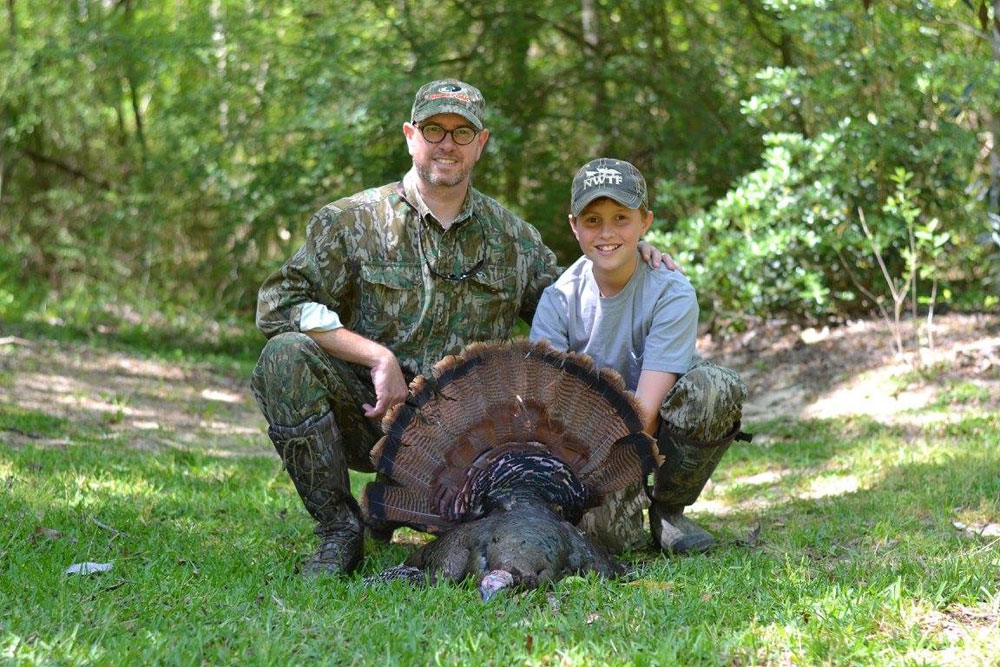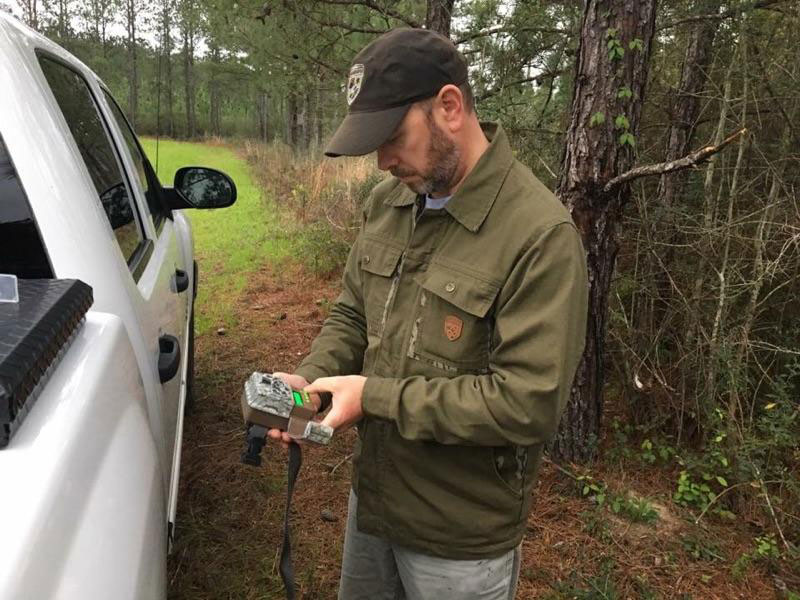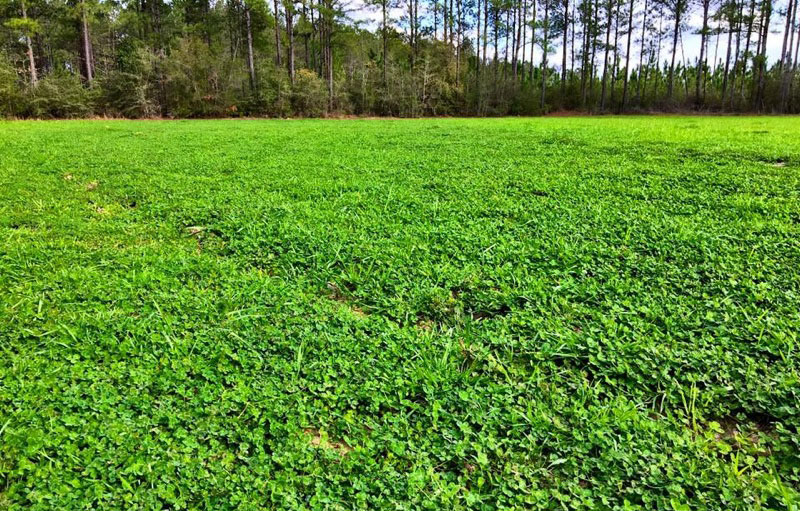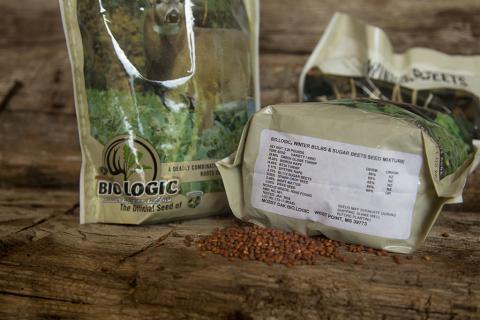
Roger Guilian of Fairhope, Alabama, has worn Mossy Oak camouflage since 1998. Like many of us, Guilian belongs to a hunting lease, and his contains about 1700 acres. The property is owned by a non-profit land trust and is managed for timber. The forester takes care of when to thin and when to burn.
“The members of our club pay for the planting of green fields, however I use my own management system too,” Guilian explains. “I believe that I can have a one-man GameKeeper program inside of our hunting lease.”
Hunting Lease
On our lease, we plant food plots primarily to attract and hold deer since the majority of our club members are deer hunters. We just had a 200-acre clear cut on our property, which is one of the first we’ve had in many years. We’ve used several different BioLogic mixes to learn which blends of seeds seem to work best for our soil. Our property is in extreme south Alabama, where our soil is primarily a sand/clay mixture. We don’t have the rich Black Belt soils that you’ll find about 2 hours north of our land.
The mature bucks harvested on our land generally will score 120-140, with most of them in the 120-inch range. We use trail cameras to help develop a shoot/don’t shoot list of the bucks on the property each season. Our harvest rule on bucks is that a buck must have 8 points or more, with antlers wider than his ears. The inside spread of the buck’s main beams must be 18 inches, but that rule doesn’t apply to a child taking his or her first buck. However, we adhere to these restrictions strongly, and there’s a fine placed on any member who harvests an undersized buck. Another of our restrictions says that no whitetail can be harvested that weighs less than 65 pounds. These rules help us harvest almost exclusively older age class bucks.
South Alabama Bucks

I was the last charter member to join this club in 2008 in extreme southwest Alabama in Baldwin County. We don’t see many bucks every season, because the undergrowth on the club’s land is so thick. However, on my personal trail cameras I’ve put out on the property, I’ve seen some nice bucks. I’ve got photos of one buck that would score 140 inches, a really big buck for our section of the country. I always see several bucks during daylight hours on my trail cameras up until October 15th when bow season arrives in Alabama. But after that date, the only pictures I get of buck deer are after dark. I don’t know our property’s bucks know the very day bow season arrives, but I do know they’ve got it figured out.
Our property hasn’t been burned in a number of years, therefore, most of our land is composed of really thick cover. There’s a lot of native browse on that property. You can’t go hardly anywhere on the land without seeing an abundance of beautyberry, greenbrier and lush vegetation on which the deer can feed. One of the reasons so much foliage is present on our land is due to our region not having severe winters like most of the country.
Soil Testing
Our soil also has a fairly low pH, meaning it’s very acidic. So I build small, out-of-the-way, no-till plots on the land. The system I’ve developed will work for anyone inside the parameters of a hunting lease. The soil’s pH is between 5 and 5.5, which is very acidic. To get the soil right to grow crops for deer, we’d have to add lime to the soil about every couple of years.
Our club typically doesn’t take soil samples, and I can’t remember the last time we had lime put on our food plots. To be honest, our plots are strictly to attract deer that our members can harvest. This land can sell at any time, so I understand why the club as a whole does only a minimum amount of land management. We have no piece of paper that says we’re guaranteed to have this lease next year. Our hunting lease management decisions are based on how the members of the lease see the future of that land and not based on trying to grow big bucks for the future. However, that doesn’t mean that individual club members can’t practice some type of wildlife management on this land on their own.
What I’ve done individually on the club is look for old logging decks or places where a bulldozer has cleared out a road, turned around and created a small open spot that allows the sun to reach the ground. I search for any type of opening in the woods on our property where sunlight reaches the ground. These spots only may be 1/4-acre or less.
First I take a soil sample on each of these little places I find, send those soil samples to BioLogic and have the experts there recommend the amount of lime and fertilizer I put out at each place. I take a backpack blower and a big metal rake with me to blow and rake the ground as clear as I can and expose the topsoil. Next. I spray that area with a non-selective herbicide. When all the weeds and bushes are dead, I’ll rake all of it off the area. Then I put out pelletized lime I carry in with me to help neutralize the acidity of the soil.
Small Plot Hot Spot

I have had the best success with BioLogic Hot Spot for these small food plots in the woods. These small plots are an ideal way for someone like me who doesn’t own any farming equipment and has a limited amount of money to spend on habitat enhancement.
I was very proud of myself when I planted my first Hot Spot field, and the crop came up quickly. Everything about that green field seemed to be perfect, except for one thing. When I went in to put up my tree stand, I realized there weren’t any trees large enough or near enough for me to bowhunt the field. With limited sight distance and extremely thick habitat surrounding these plots, they are mostly just for archery hunting.
Another factor I overlooked was the wind direction. I had a very difficult time locating a tree big enough to put a tree stand in that would face a direction from which the wind most often blew. So, today I recommend that before you put a lot of work into a food plot, make sure it can be hunted with the prevailing winds. In most of Alabama, bowhunters set up their tree stands to face the northwest, due to that being the prevailing wind in the state. However, since I’m hunting in south Alabama not far from the Gulf Coast, often that region will have winds coming from the southwest or the east.
What I enjoy most about GameKeepers is that its philosophy is based on lessons learned. All the founders of GameKeepers, through trial and error, have discovered what works and what doesn’t. This club is designed for the everyday hunter. After I did all the work to create my first beautiful food plot, I wasn’t able to hunt it, but I know the wildlife benefited from the planting.
For more information about GameKeepers and their practices, go to http://www.gamekeepersclub.com.



























